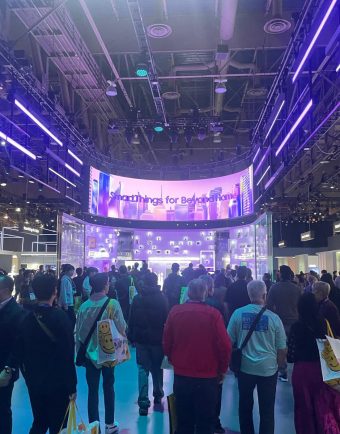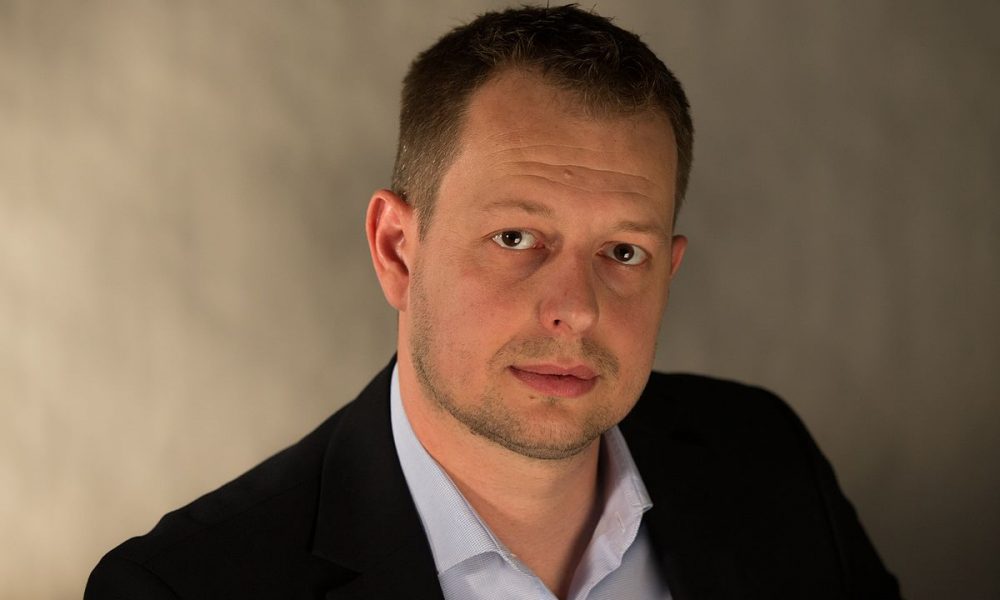

Přejít k obsahu | Přejít k hlavnímu menu | Přejít k vyhledávání

“Because from my point of view, the concept of smart city or smart building is mainly about developers. They must first see that smart technology makes sense and is not an unnecessary burden,” says Jaroslav Kacer, Deputy Mayor for Smart City, City Strategy, Informatics, and Office Electronics. Technology is ready,
“Because from my point of view, the concept of smart city or smart building is mainly about developers. They must first see that smart technology makes sense and is not an unnecessary burden,” says Jaroslav Kacer, Deputy Mayor for Smart City, City Strategy, Informatics, and Office Electronics.
Technology is ready, are cities ready? We bring the first part of the new series about cities that are planning to involve smart technology in the city. We will be looking at how far cities are at the threshold of the era in which Industry 4.0, the Internet of Things, artificial intelligence, or high-performance computing become no longer a fabled vision, but the reality of every day. Getting started, maybe a little symbolically, in Brno. A city that does not conceal the ambition of becoming the Central European Silicone Valley. The region of IT talents, pre-launch startups, headquarters of leading global companies. The Moravian metropolis wants to believe that a large number of engineering graduates will actually stay in Brno. That there will be other projects like Kiwi, Y Soft, Phonexia or Kentico. How far is it from ideas to reality, we asked Jaroslav Kacer, Deputy Mayor for Smart City, City Strategy, Informatics, and Office Electronics.
The first is the city identity Brno iD. Unlike other cities, we do not just want to say that we want to be like Estonia, but we have actually made an electronic citizen identity. It is used by more than 60,000 people in Brno to resolve their purchases of public transport tickets, to pay for waste, to book tourist cards, and to join the city by voting. If this can be achieved and legislated, it should soon be possible to pay a penalty for parking. The second project is to make the data available to the public. We have launched a relatively robust data portal that is available to everyone. Citizens, students, businesses can get important information about the city. The third is a project called the smart district of Špitálka, which is supposed to be a demonstration project of how the city wants to proceed with new construction.
We want a smart neighbourhood. A kind of live showroom of urbanism, architecture, lifestyle, and technology put into practice. But also a place that will not be a desert island in the middle of the sea but will be connected to the surrounding infrastructure. We want to demonstrate that even in the former brownfield, in the post-industrial zone, a quality architecture can arise that will fulfil all the functions of housing, employment, business networks. At the same time, we want to use as many modern technologies as possible, including connecting to a neighbouring heating plant. Test technologies and products in practice so they can be an example for developers and spread across the city. Because from my point of view, the concept of smart city or smart building is mainly about developers. They must first see that smart technology makes sense and is not an unnecessary burden and at the same time, how to put them into daily practice.

There is some pilot technology running on IoT, whether it’s Roosevelt’s parking sensors, and so on. I just think that the question is not about whether to use IoT but rather to define what we really need to have in an integration platform in the city, and we could collect data from different technologies. Not only within that band, which is 868 precisely defined or even the weaker technology. Or even recently within the 5.4 GHz band, which is a reserved band for infrastructure and car communication, this is one of the pilot projects at the national level where the See roads project is. But it’s not just about collecting data, buying as many boxes as possible. First of all we need to know how to handle the data. It must always have some use and at least tie it with the individual layers and put it together because it is costly in itself, because the data must be stored somewhere. I’ll tell you one thing that you may not like. But we should put as much pressure on the European Union as possible to prepare a unified decree that would provide mobile operators with anonymized data for the needs of the city and their planning for free. And that would replace many sensors.
Before you start, you need to have the infrastructure ready in the background. Know where we want to go and why we want to go there. The basis of our perception of smart technology is UX. User experience. We do not want to buy and test all the technologies around us but to know the needs of today’s Bruneians’. And then to prioritize those that are the most important for us. And then, of course, there are general things – legislation, processes, small or complex communication between entities. When I take the example of Brno ID, I lack support from the national level. On the one hand, we all call for electronic citizens who will know something. But, on the other hand, we are hardly asking for access to the registers. Personally, I also lack the cooperation and “know-how” in cities of similar size. One city develops something, but it does not offer it to anyone.
We try to cooperate with the most important subjects. We have created an urban ecosystem of people, asking people about individual projects, and trying to involve them in the day-to-day running of the city. We give them data, information, and we expect our own ideas about the next steps. It’s good for me, but we’re still at the beginning. For all institutions to breathe together with the city, it is not yet, but perhaps it will succeed. Again, there is an even bigger link to the national level. For example, something like a pre-commercial public procurement institute.

I love the city; the system has a modular build smart city, thus, independent of one company or one solution. And so that technology can expand anytime. There is a comparison with the LEGO kit. The cube will be replaced, but the whole system will work and it does not matter who is the supplier is. As far as the digital public message is concerned, it is Estonia. As far as spatial planning is concerned, we can talk about Copenhagen, Rotterdam and nearby Graz. In the field of sound management and waste management, the Nordic countries are the inspiration for me. For example, Stockholm, which cleverly uses bio gas stations to drive public transport.
Hyperloop is a reality, depending on how many cities and states sign contracts and memoranda with the various companies around the hyperloop technology. We are at the stage of preparing the final contractual relationship for the feasibility study, which should include three key players. City, region, and HTT (Hyperloop transport technology). They should prepare a feasibility study for joining major metropolises and we are primarily for the Prague – Brno – Vienna – Bratislava option. So to find out that this might be interesting. If this is done, this treaty will go to the gentlemen’s council. The aim is not only to make Brno the map of the future hyperloop link, but also to involve our business, scientific or academic potential in technology.

It should remain a city where to live, where to find a job and realize leisure activities. In order for the city to be dynamic and able to attract talent, the population should rise. In turn, we need better transport accessibility. And of course, to maintain and improve our innovative potential. From universities, up to industry with higher added value.